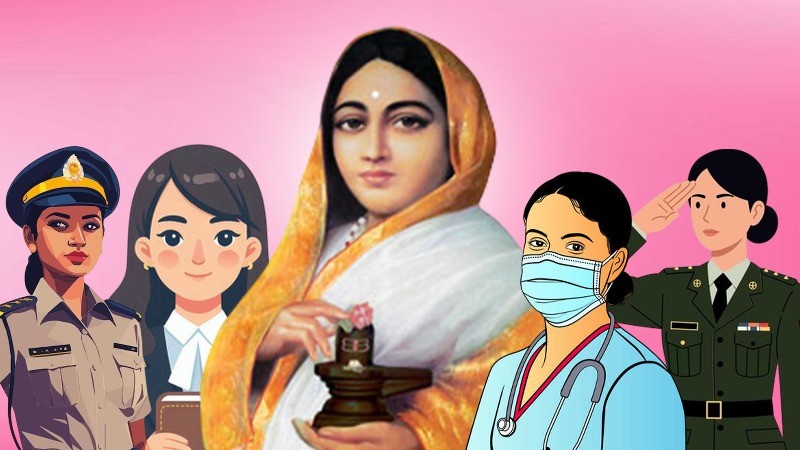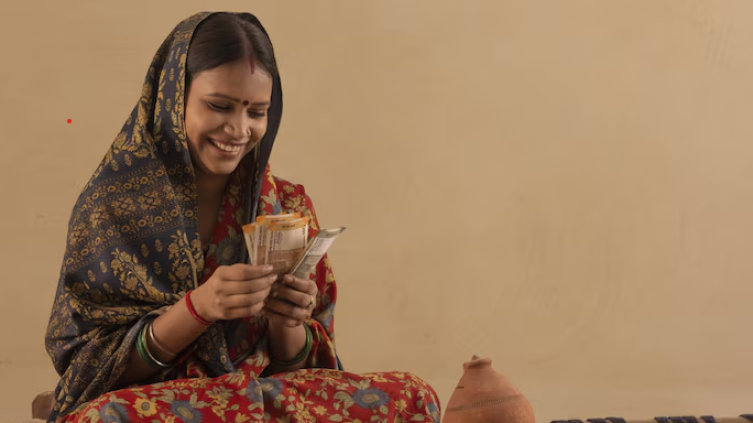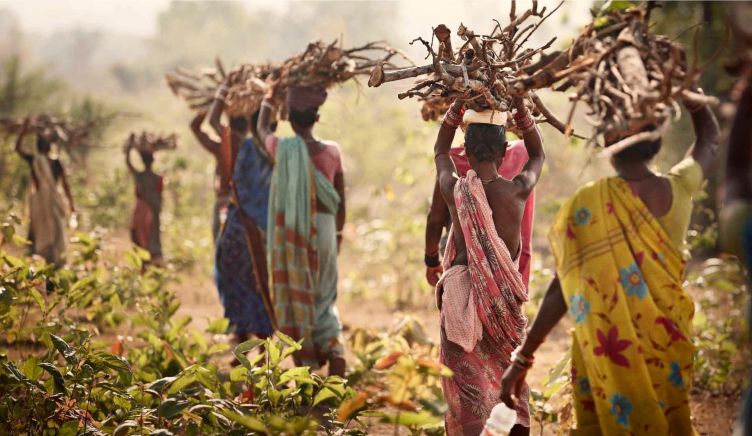
As India celebrates the 300th birth anniversary of Lokmata Devi Ahilya Bai Holkar in 2025, we too enter a new era of Women's Empowerment. Ahilya Bai's legacy endures, centuries later, in administration and governance, empowerment and self-reliance, and ultimately, a prosperous state. Prime Minister Narendra Modi visited Bhopal on this occasion, where he inaugurated key infrastructure projects in Madhya Pradesh. But moreover, it was about celebrating women, and the Madhya Pradesh Government's efforts towards their empowerment. Here is a look at the initiatives taken in this direction, its current status, a comparison of Urban and Rural empowerment, do current schemes empower them, and an insight into leading women across various sections of the society.
 The Madhya Pradesh Government's 2023 scheme, Ladli Behna Yojana, continues in the policy-making of the state, aimed at the financial inclusion of women
The Madhya Pradesh Government's 2023 scheme, Ladli Behna Yojana, continues in the policy-making of the state, aimed at the financial inclusion of women The Madhya Pradesh Government has adopted a 'Women first' approach in its policy making, working, and governance. In 2025, Rs. 26,797 crore will be spent on women's empowerment. Here are some of its major initiatives and programs:
The highlights of the Madhya Pradesh Government's schemes include the Ladli Behna Yojana and Lakhpati Didi Yojana, which provide monthly financial aid to women. The current budget allocates Rs. 18,669 crore for the Chief Minister's Ladli Behna Yojana. About 2.20 lakh tribal women are provided with Rs. 1,500 per month.
To promote entrepreneurship among women and assist them in their journey, the MP Government has introduced schemes like Mukhyamantri Swarozgar Yojana, MP Jeevan Shakti Yojana, Mukhyamantri Kaushal Samvardhan Yojana, among others.
Ensuring employment and increased work opportunities, there is a 35% reservation for women in State services, except for the Forest Department. Provisions are also made for a 50% reservation of women in elections, teaching, and a 33% reservation in police recruitment.
Ladli Lakshmi Yojana for the girl child's birth, their education, health, and overall development.
Livelihood programs & Self-Help Groups (SHGs): The State Government promotes the establishment of SHGs for the skill development and training of women, easy financial assistance, and their upliftment. Under the Prime Minister's Deendayal Antyodaya Yojana-National Rural Livelihoods Mission (DAY-NRLM), lakhs of women are connected to various SHGs, improving the socio-economic landscape of India. Anganwadi services continue to function efficiently, with a boost of Rs. 3,729 crore.
_684699fa5d2d1.jpg) Dr. Vachana Singh Parmar states that Self-Help groups and Livelihood Programs and Livelihood programs are empowering for women in the state
Dr. Vachana Singh Parmar states that Self-Help groups and Livelihood Programs and Livelihood programs are empowering for women in the state
Dr. Vanchna Singh Parihar, Women Empowerment Officer at the Ministry of Women & Child Development, Indore, Madhya Pradesh, says, "Today's condition is much better for women, if not the best. They are empowered, at least knowing what they want. For the lower classes, the SHGs and Livelihood programs have been a boon. They are not only sustaining themselves, but even performing better."
On May 31, the Prime Minister participated in the 'Lokmata Devi Ahilyabai Mahila Sashaktikaran Mahasammelan', which was attended by over 2 lakh women, an event for the sisters, mothers, and daughters of the nation, for their enduring support and unwavering spirit, dedicating the success of 'Operation Sindoor'.
 The girls' school dropout rate is a lingering concern regarding women's empowerment in Madhya Pradesh
The girls' school dropout rate is a lingering concern regarding women's empowerment in Madhya Pradesh As the Government initiates various schemes for women, here is a look at the current status: The female literacy rate, school dropout rate, the social evils lurking in the state, and the awareness in the society:
Female literacy rate in Madhya Pradesh: Until 2024, the average female literacy rate in Madhya Pradesh was 59.24%. In urban areas, the ratio is 76.52%, while in rural areas, it is 52.43%[1]. In its Annual Budget 2025-26, the MP Government allocated only 13.8% of its expenditure for education.
Girls' school dropout rate: According to the Unified District Information System for Education 2021-22, 48% of the girls in the state drop out of upper primary schools and do not go back to complete their education. This further increases to 70% for higher secondary classes. Comparatively, the figures stand quite low among the boys.
Social evils: As women rise and prosper, there are prevailing social evils that hinder their growth and empowerment. An average of 20 rape cases were reported daily in 2024, a 19% rise was recorded to those in 2020 (Data by State Home Department). While there is no end to incidents of violence and exploitation against women, human trafficking, sexual assault, child marriage, and drug abuse.
Social awareness: Fostering social awareness to promote gender sensitivity, ensuring community engagement and support. But, on the grassroots, girls still drop out early from school, the average literacy rate still stands a little above half, and social evils continue...
_68469addea404.jpg) Dr. Rachana Saxena David finds that the education of girls is still largely influenced by societal functioning and mindset
Dr. Rachana Saxena David finds that the education of girls is still largely influenced by societal functioning and mindset
Dr. Rachana Saxena David, a renowned social activist, says, "All of this is interlinked. There is still a psyche in the society where people do not want a girl to go for higher studies, because if they do, they will become independent. Also, even if they want their girls to study, they tend to shrug it off, seeing the crimes happening these days. They feel it is better to keep her at home."
 The rural women sometimes do not have stable employment, and are often left unpaid
The rural women sometimes do not have stable employment, and are often left unpaid
A striking difference exists when we talk about Rural and urban women's Empowerment in Madhya Pradesh. This includes areas of:
Social status: In terms of making money, decision making, and financial literacy, rural women still lag. They do not have stable employment, and 'ghost or hidden' work still prevails. They serve as cultivators or agricultural labourers, mostly doing the hardest toil on land, but have the highest pay parity or are even left unpaid at times.
According to Mrs. Rachana Saxena David, "It is the financial independence that can empower women. Unless they do not earn, and are not able to have a say for 'their use of money', there is no empowerment."
Health concerns: Rural women still suffer from anemia (which results in weakness, pregnancy issues, among other concerns), low BMI (Body Mass Index), and high mortality rate due to pregnancy and deliveries.
Coming over to the reservation in the local bodies. 50% of the seats are reserved for women candidates, but when they win. They are a mere puppet or a proxy whose husbands take charge of the 'actual power'. There has to be a strict representation ensured so that this doesn't happen.
 The Lakhpati Didi Yojana was also approved by the Central Government in its Interim Budget of 2024
The Lakhpati Didi Yojana was also approved by the Central Government in its Interim Budget of 2024 For Lali, being empowered is 'making a say for herself', Shanti wants to 'earn' to never have to ask someone for anything, Radha wants to fly high, and Sharmila is in hopes of living for herself once in life. They can avail the benefits of Ladli Behna Yojana and Lakhpati Didi, but do these schemes empower them?
When the schemes were launched, experts had mixed reactions to them. About Lakhpati Didi, one of the senior rural development professionals, called it a 'populous measure'. Though it covers a significant number of the female population, the challenge for women entrepreneurs is to sustain themselves. Lakhpati Didi creates livelihoods, but what about Ladli Behna? It is often considered a freebie that was introduced before the elections.
_68469942492ec.jpg) Rachana Johari feels, what is empowerment if women are not able to keep the finances with themselves?
Rachana Johari feels, what is empowerment if women are not able to keep the finances with themselves?
Mrs. Rachana Saxena David states, "Schemes like Ladli Didi are only increasing the dependency of women, rather than empowering them. Even the money that they receive from the Government is not for themselves, nor can they use it the way they want to. It is ultimately taken away from them." To which Rachana Johari, Senior journalist and Development communication writer, adds, "With the money received from Ladli Behna, firstly, women get a monthly recharge for their mobiles, giving the rest of the money to their husbands, who usually waste it in purchasing alcohol for themselves. How and where is the empowerment?"
Dr. Vachna Singh Parihar says, "As of now, I find a significant number of women doing well as entrepreneurs, with the Lakhpati Didi Scheme. There is a financial inclusion of women, and with time, they can gain enough financial literacy."
Well, the success of these schemes shall be visible in the years that follow, and for how long will the government stick to them?
Women have always played an active role in the mainstream, whether it was Lokmata Ahilya Bai in that era, or a young girl today, who will rise for the same in this generation. Today, women in Madhya Pradesh are shining bright across all sections of society. In the field of medicine, law, civil services, teaching, and even policy making, women are making their presence count.
Barkha Agrawal, Archana Nagar, Arti Agrawal, Dr. Pooja Dubey Pandey, and Rachita Kasliwal are some entrepreneurial women in Madhya Pradesh. Dr. Vinita Mewada, who is working to eradicate malnutrition from various communities, Rashida Bi, founder of an NGO that works for the victims of the Bhopal Gas tragedy, and Swati Tiwari, a renowned Hindi writer, among others, are some notable women working across various fields. Apart from these leading women, rural women are also making waves, with Bundelkhandi women making clay products, which are sold within the country and abroad, and women of Jawar village in Khandwa making herbal soaps from goat's milk.
Rachana Johari says, "Urban women were empowered decades ago. But they forgot that it is about empowering themselves, not overpowering males. We have to work as colleagues and support each other. It is about equality in opportunity and decision making."
The Government is surely working towards the empowerment of women through policies and their implementation. But some challenges and concerns still lie, which need to be pondered upon, coming up with new age solutions, so that there is nothing that stops women from thriving.